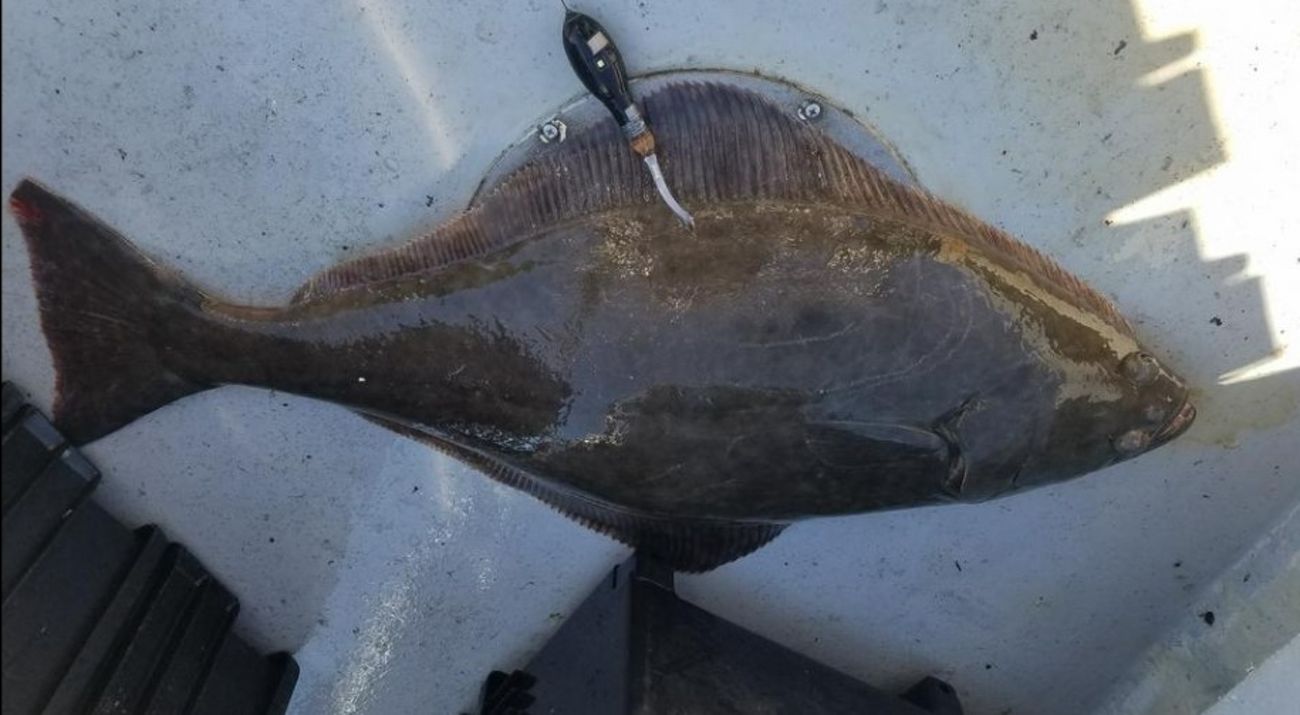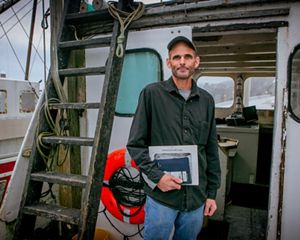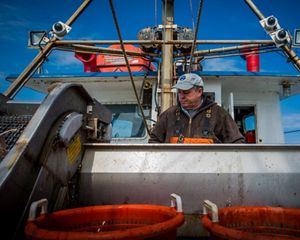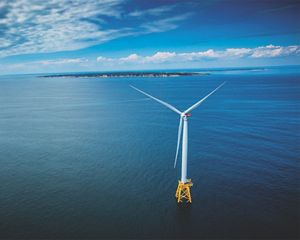Researching a Remarkable Halibut Recovery
Halibut seem to be rebounding in the northern Atlantic. TNC, fishermen and researchers are studying the species to inform future management.
In the late 1800s, the Atlantic halibut population off the northeast United States and Canada crashed due to overfishing. It hadn’t shown signs of recovery until recently. Regulations instituted following the crash are still limiting, but since 2004, fishermen have been catching halibut in increasing numbers in U.S. waters while fishing for other species. And in Canada, the population has now grown to the point where it is now certified sustainable by the Marine Stewardship Council.
“I remember about 15 years ago, we started to see small halibut off the coast of Cape Cod, then years later we started to catch a legal-sized one now and then, and now we’ll catch sizeable halibut across the fleet most of the year,” says Nick Muto, a fisherman and lobsterman in Massachusetts. “These days, we catch a 75-pound halibut with almost no fanfare. The biggest one we landed this year was over six feet long and weighed about 180 pounds.”
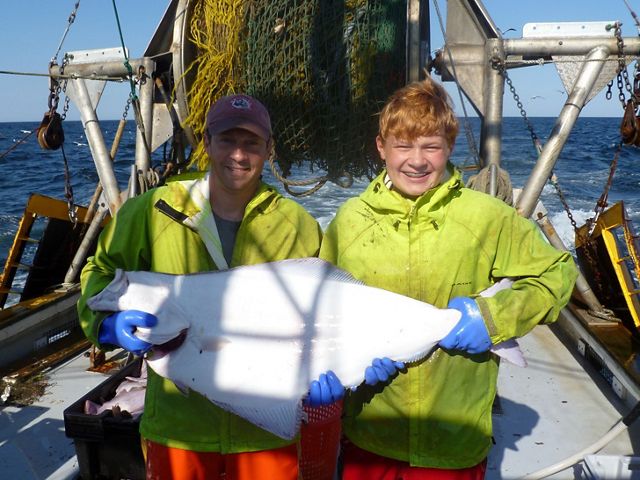
Understanding Atlantic Halibut Populations
The increased number of sizable halibut in Northeastern waters trends in a positive direction, however, there are some big unknowns that need to be addressed in order to better steward halibut recovery in the U.S. There is also still a ways to go before the population will be considered stable or sustainable. Greater understanding of how much U.S. and Canadian halibut are mixing, and at what age the fish mature, is needed to help inform if and when catch regulations could change.
“Having this information will ensure that as fishermen and regulators respond to greater availability of this species, they are doing so in a well-informed and sustainable way that supports healthy oceans and thriving communities,” says Chris McGuire, marine program director for TNC in Massachusetts.
Quote: Nick Muto
I like seeing fishermen involved in research, it helps us take ownership for what we see on the water.
Partnering to Track Halibut
To get some answers, TNC developed a collaboration with Cape Cod fishermen and researchers from state and federal fisheries agencies and the University of Massachusetts–Dartmouth. The team was awarded funding from the National Oceanic and Atmospheric Administration (NOAA) for a three-year study which wrapped up this spring. The goal is to gather more information about current population, including where they live and migrate, and when, where and at what age they reproduce.
As part of this research, halibut were caught and tagged with an electronic tag that they then swam around with for months. When the tag popped off and transmitted its data to satellites, researchers used that data and an algorithm to determine where the fish had traveled while they were tagged.
Gathering Migration Evidence
TNC and partners published initial findings, showing that halibut from U.S. waters routinely cross the Canadian border—over half the fish observed did. They even discovered a halibut “love story” in this migration. Data showed that two fish, one initially tagged off the coast of Maine and one tagged northeast of Cape Ann, Massachusetts, both swam for six to nine months and hundreds of miles, across the Canadian border and into the deep waters east of Georges Bank. The two fish were in the same place at the same time, in an area where halibut are known to reproduce in the winter.
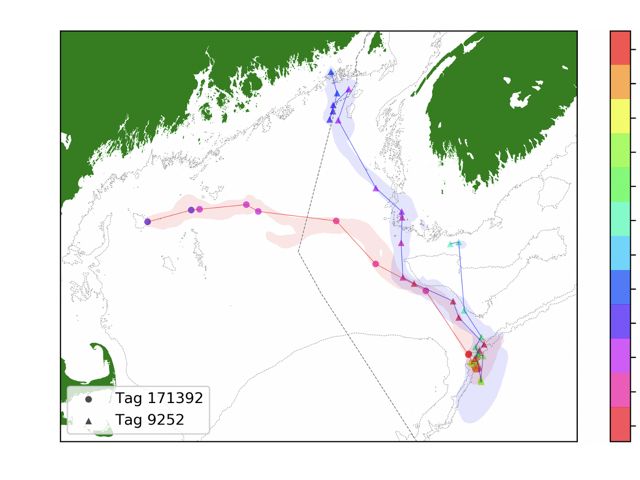
"This is the first evidence of halibut swimming from different areas in the U.S. to spawning areas in Canada, which has important implications for science," says McGuire. "As this evidence grows, we can better coordinate management efforts across the border."
Furthering Halibut Research
The second part of the research included collecting biological samples from halibut caught by commercial fishermen off Cape Cod. In most years, NOAA scientists sample fewer than 15 halibut a year, but thanks to this collaboration, fishermen collected 250 samples. Sampling this many fish provided key information about the age and length of halibut off Northeast shores, as well as data on their reproductive age, helping to revise the median data previously on record. The data indicated that halibut may not reach full maturity until ten years old and nearly 50 inches long, which is later and larger than previously thought.
"This information is critical for management because the best practice is to only harvest fish who have already had the chance to reproduce at least once," says McGuire.
"I like seeing fishermen involved in research; it helps us take ownership of what we see on the water," says Muto. "We're seeing that these fish are on the comeback and could be a valuable fishery in the future. We need to continue research."
Moving forward, TNC is working with a consortium of halibut researchers from the U.S. and Eastern Canada to understand Atlantic halibut across their range—consistent data through comprehensive annual surveys would improve scientists' and fishermen's knowledge as they plan for future fishery management. Deploying tracking tags more widely could help build on this research, as the initial study has confirmed this is a useful tool for providing information on halibut movement.
